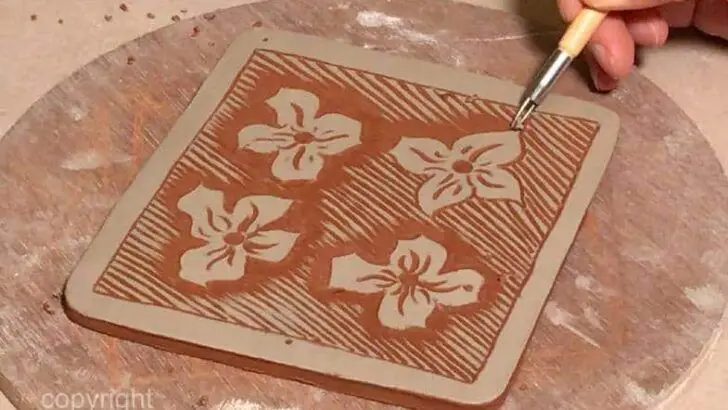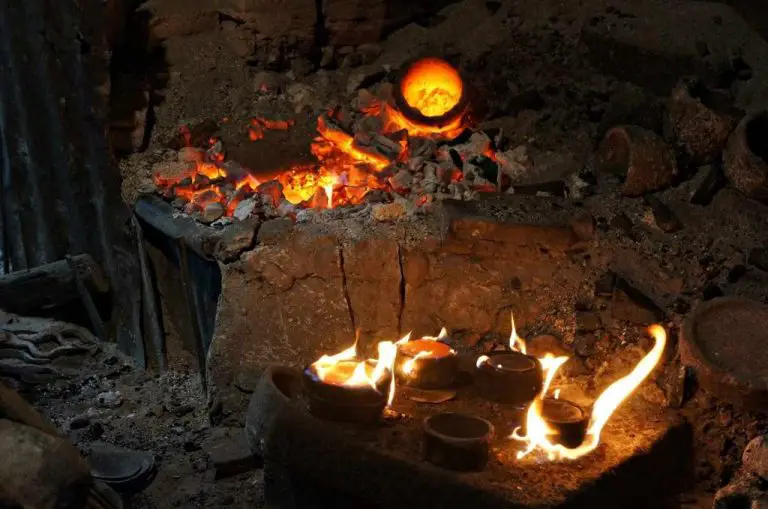How Do You Mix Translucent Clay?
Translucent clay is a polymer clay that allows light to pass through it, creating a translucent or semi-transparent look when cured. Mixing translucent clay requires balancing multiple types and colors of clay to achieve your desired finished look. Properly mixing the clay ensures an even distribution of color and pattern throughout and prevents unwanted color variations or streaking in the final piece. Taking the time to thoroughly mix translucent clays is worth the effort, allowing you to create beautiful jewelry, decorative objects, and miniatures with a lovely luminous quality.
Mixing translucent clay well takes some patience but follows a straightforward process. The keys are conditioning each clay component properly, combining clays and colors with care, and kneading thoroughly to integrate the colors evenly. Having the right tools and supplies on hand is also important. When done right, you’ll end up with a smooth, uniform clay blend ready for sculpting and baking. The result will be translucent creations with a consistent, flawless finish.
Mixing translucent clay has many benefits compared to using single solid color clays. Blending colors and effects opens up new possibilities for elegant translucent looks. The mixing process also warm and conditions the clay, making it softer and more pliable for sculpting intricate details. Taking the time to mix properly will reward you with clay that has an even finish and cured translucency, avoiding unsightly color variations in the final piece.
Gather Necessary Materials
Before you begin mixing translucent polymer clay, make sure you have all the necessary materials on hand. Here’s what you’ll need:
- Polymer clay in the translucent colors you want to mix – try pearlescent or iridescent colors for cool effects
- Clay mixing tools like a palette knife, spatula, clay scraper, or blade
- A smooth nonporous work surface like glass, marble, or ceramic
- Pasta machine or acrylic roller for conditioning the clay
- Tissue blades for slicing translucent clay thinly
- Containers with tight lids for storing the mixed clay
Make sure your tools and work area are clean before getting started. Any debris in the clay can mar the translucent finish. Have paper towels on hand for quick clean up too.
Condition the Clay
Before mixing translucent polymer clay, it’s crucial to properly condition each type and color. Kneading the clay with your hands warms it up and makes it more pliable and soft. This allows the clay particles to move smoothly against each other when mixing.
Firmly knead each clay color separately until smooth, uniformly soft, and malleable. This distributes moisture evenly throughout and prevents crumbling when mixed. Work the clay by folding and pressing it into itself repeatedly. Don’t be afraid to use some force.
Conditioning also prevents cracks and breakage later when shaping the clay after mixing. Well-conditioned translucent clay blends together seamlessly without streaking or marbling. Proper conditioning requires 5-10 minutes of kneading per clay color. It takes some elbow grease but is worth the effort for superior mixing results.
Combine Clay Types and Colors
When working with translucent polymer clay, you’ll need to combine it with solid clay to create the colors you want. First, decide on the color palette you’d like to achieve. Translucent clay comes in a few standard colors like white, yellow, pink or blue. You’ll mix it with solid clay in other shades.
Start by taking a portion of the translucent base clay. Add small amounts of solid clay and knead together until fully incorporated. Make test batches with different color ratios to compare. Remember that the color will appear darker once baked. Mix colors thoroughly so there are no streaks. But avoid overmixing, which can dull the translucent effect.
Plan color placement if doing multiple colors on a project. Keep batches separate if specific colors are needed in certain areas. Take notes on color ratios that work well so they can be reproduced.
Thoroughly Mix the Clay
Once you have combined the clay types and colors, it’s time to thoroughly incorporate them together. Proper mixing ensures the clay blends into a uniform color with no streaks. Here are some techniques for thoroughly mixing polymer clay:
– Fold and twist the clay over itself repeatedly. Imagine you are folding batter while baking. Turn the clay over itself until the colors are fully blended.
– Roll the clay into a log shape. Then, slice the log into rounds. Stack the rounds together and roll them out into another log. Repeat this process of slicing and stacking until the clay is one solid, consistent color.
Keep mixing until you no longer see any streaks or swirls of color. The clay should be one uniform shade with a smooth, consistent texture. Avoid overmixing though, as too much manipulation can cause the clay to become stiff. Thoroughly mixed clay is ready for kneading in any inclusions and using in your polymer clay projects.
Check for Consistent Color
After you have thoroughly mixed the translucent polymer clays, inspect the clay closely for any streaks of color. Translucent polymer clay blends can often result in uneven mixing, where some areas retain more of one clay color than others. This can lead to unexpected results when the clay is baked.
To ensure your translucent clay mix is consistent, continue kneading and mixing the clay, folding it over itself repeatedly. Check the clay from all angles and look for subtle color variations. Translucent clay colors can blend unevenly at first before becoming fully integrated. Keep mixing until the clay color looks completely uniform with no visible streaks. A consistent color throughout the clay is essential for achieving the desired translucent effect after baking.
Avoid Overmixing
Overmixing translucent polymer clay can cause it to become stiff and difficult to work with. The clay contains plasticizers that help keep it malleable, but these can break down with excessive kneading and folding. Therefore, it’s important not to overmix the clay when combining colors.
Mix just until the color looks evenly distributed throughout. Check the clay thoroughly to ensure there are no streaks or unincorporated bits of color. Once the color appears uniform, stop mixing. Further kneading won’t improve the blend, but could make the clay too stiff.
Aim for the minimum amount of mixing needed. Fold the colors together gently but thoroughly. Watch the clay as you mix to determine when an even, consistent color has been achieved. Stop as soon as it reaches this point while the clay still feels soft and pliable.
Knead in Inclusions
Once you have thoroughly mixed the base clay to achieve a uniform color, you can start kneading in inclusions like glitter, mica powder, beads, or other additives. When adding inclusions, it’s important to be gentle so you don’t overmix them.
Start by rolling a snake of clay and laying the additives on top. Fold the clay over and seal it around the inclusions. Use a gentle kneading motion to evenly incorporate them without breaking them down too much. Glitter and mica powder especially need a delicate touch so they maintain their shine and sparkle.
Only add small amounts of inclusions at a time so you can monitor the consistency. If needed, roll more snakes to fully distribute the additives. Take care not to overwork the clay, as too much kneading can ruin the inclusions or darken translucent polymer clay.
By gently kneading in inclusions, you can create beautiful swirls and effects in translucent clay without losing the translucency. This adds interest while still allowing light to pass through the finished piece.
Store Properly
After mixing your translucent polymer clay, it’s important to store it properly to maintain its consistency and workability. Here are some tips for storing translucent clay:
Wrap the clay tightly in plastic wrap or place it in a sealed plastic bag. This prevents the clay from drying out. Wrap the clay into a log shape before wrapping it to minimize air pockets. Smooth out any creases in the plastic wrap so no air can penetrate through.
Store the wrapped clay in a cool, dry area like a cupboard or drawer. Avoid warm places like on top of the refrigerator which can cause the clay to soften. Also avoid direct sunlight which can discolor translucent polymer clay over time.
Only mix as much clay as you plan to use in the near future. Mixed translucent clay will stay workable for a few weeks if stored properly, but over time it may start to dry out. For long term storage, keep unmixed clay blocks in sealed bags.
Troubleshooting
If you encounter issues when mixing translucent polymer clay, there are some tricks to troubleshoot and salvage your clay:
Fixing Streaky or Muddy Clay
If the clay did not mix thoroughly and has streaks or muddy spots, knead it further to blend the colors. You may need to add a bit more of the dominant clay color to mask streaks. Avoid over-blending, as too much kneading can darken the clay. Work in small sections until the clay is a consistent color throughout.
Reconditioning Stiff, Dried Clay
Clay that has dried out can be reconditioned by warming it and massaging in translucent liquid clay or clay softener. This lubricates the clay and makes it pliable again. Work the liquid in thoroughly until the clay is smooth and soft. Let it rest sealed overnight before using to fully absorb the softener.
Other Issues and Solutions
If inclusions such as glitter or mica powder clump up, use a dedicated clay tool to break them up and evenly distribute while mixing. Prevent air bubbles by avoiding over-kneading. Pop any bubbles with a needle tool before baking. If the clay crackles or doesn’t cure properly, there may be an incompatibility between brands. Stick to mixing clays from the same manufacturer.


